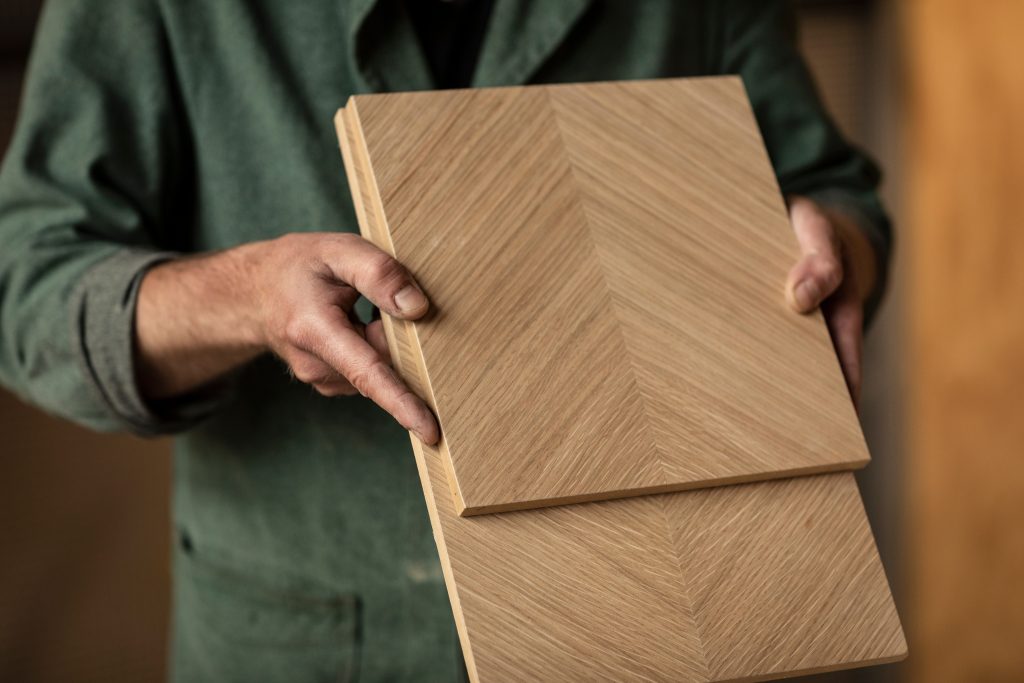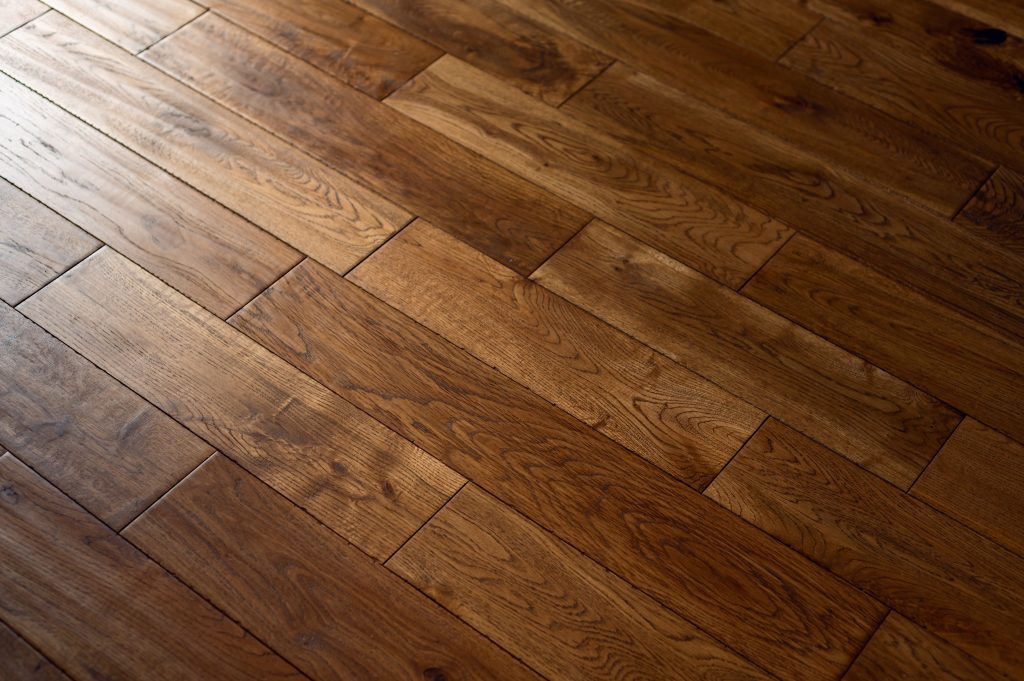Timber Veneers vs Solid Wood: What's The Difference
The Key Differences of Timber Veneers vs Solid Wood
Although a seasoned eye may be able to quickly tell the difference between wooden furniture or design elements made from durable timber veneers and those that have been made using solid wood materials, it can be a bit trickier for laymen to tell the difference. This is mainly because the process of making veneers is so stringent, with timber mills striving to find new and innovative ways to create veneers that mimic the natural look of sliced timber to a tee.
So with veneers being produced to higher and higher standards, it raises an interesting question: should you secure timber veneers vs solid wood materials for your next woodworking project? In the question of ‘timber veneers vs. solid wood’, it can be all too easy to forget that both of these unique wood materials have their own benefits and disadvantages. Similarly, they both have their own ideal use cases, so deciding which one is right for your project should involve outlining your project and understanding exactly how you intend to use your wood products.
To help, our experts here at Cabinet Timbers will be outlining all the key differences between timber veneers vs solid timber, alongside also sharing how to tell if furniture is made with solid wood or veneers. Read on to help you settle the age-old debate of timber veneers vs. solid timber in time for your next woodworking or construction project.
Article Contents between Timber Veneers vs Solid Wood:
NEED WOOD PANELS?
No stress, we're here to help. Fill out the form below for a free quote and consultation with our experts.
Timber Veneers Key Applications & Characteristics
Timber veneers are decorative wood materials that are manufactured by thinly slicing timber logs down into uniform sheets. These sheets can then be spliced or glued together to produce plywood sheets or can be glued to particle board to create veneers with particle board cores. Timber veneers can either be made from timber logs or even from wood composite materials – just like MDF board.

Advantages of Timber Veneers
Cheaper than solid wood
The primary advantage of timber veneers is that it is a cost-effective wood material in comparison to solid timber. As veneers are produced by slicing down timber logs, manufacturing veneers helps timber mills maximise the production output of all the logs they process. A single timber log can be used to produce one end table, or it can be used to create enough timber veneers to produce multiple end tables.
Lighter than solid wood
And that brings us to our next major advantage: you can expect veneers to be lightweight when compared to solid wood. This makes wooden products or furniture made with timber veneers a lot easier (and safer) to transport, which is why you can expect most of the furniture sold in home retailers to be made with veneers.
Less prone to warping or splitting
Thanks to their unique production process, timber veneers aren’t as vulnerable to warping or splitting that occurs in solid wood materials as they age. So long as your veneers aren’t exposed to excessive moisture or other tarnishing agents, you can expect your veneers and veneer products to look as new as the day you got them.
Low-maintenance
Another major selling point is that veneers can be treated with either a stain, paint or a wax. timber veneers have been If something has spilt on your furniture, cabinetry etc. The spillage would be easy to remove with just a simple wipe-down with a dry or damp cloth or some standard household cleaner.
Disadvantages of Timber Veneers
Can be costly to repair
If solid wood products get dented or scratched, all you need is a little sandpaper to smooth out that little nick. Contrastingly, timber veneers that become dented or scratched can be a bit trickier to repair. In some extreme cases, you may even need to get your veneer face replaced entirely. And if you’re looking to have this repair performed to professional standards, this could end up costing you.
Less premium feel to solid wood
Finally, one of the major drawbacks to selecting timber veneers is simply that solid wood products can feel more premium – mainly due to their more unique, bespoke construction and heavier weight. If you feel like you’d prefer solid wood for this reason, then it may be worth securing solid timber for your next project.
Best use cases
As we mentioned, timber veneers are ideal for producing furniture for home retailers who are required to move a high volume of flat-pack furniture to satisfy customer demands. Timber veneers are also ideal for producing cabinets and other office furniture.
And when it comes to construction, timber veneers are ideal to be used as wall panelling. A great example of this is the plywood panelling we applied at Waverley Christian College. Check out this full expansion project here.

Solid Wood Key Applications & Characteristics
Solid wood products are becoming increasingly rare today for a few notable reasons. For starters, transporting solid wood can be tricky due to its heftier weight, so independent furniture makers and sellers are more likely to sell solid wood furniture than larger retailers.
Advantages of Solid Wood
Premium build and feel
As solid timber products are becoming increasingly rare, the primary appeal of solid wood items today is their premium build and feel. More consumers are looking for solid wood products because they’re looking to cultivate nature-inspired or eco-friendly aesthetics in their homes and workplaces.
Can be easily repaired
As we mentioned, solid timber can be a lot easier to repair if tarnished than plywood or timber veneers. This is because solid timber can be treated with varnishes, wood oils, or wax to regain their shine or glow. Solid timber products can also be sanded down to remove imperfections accrued over time or due to neglect.
A long term investment
As solid timber can be maintained for decades with the right care routine, the higher cost of your solid wood products may pay off in the long run. Simply put, you can enjoy solid timber furnishings and design elements for impressively long periods of time.
Disadvantages of Solid Wood
Difficult to transport
The major downside to solid timber is that it is a lot heavier than timber veneers. This means that solid timber products or furnishings are best positioned in environments where they’re unlikely to need to be moved anytime soon.
Sensitive to warping and splitting
Although solid timber can be easier to repair than timber veneers, solid wood is still incredibly sensitive to warping, cracking, and splitting if it’s not stored properly. For instance, if your solid wood is exposed to moisture, you run the risk of your wood products developing rot. That being said, wood moisture is a concern when working with all types of wood products, including plywood and timber veneers as well.
Higher cost investment
Although solid wood can be argued to be a long term investment, it’s also always guaranteed to be a higher cost investment than timber veneers. For most consumers, it’s simply not feasible to invest in solid wood when veneers are guaranteed to be cheaper and easier to handle due to also being lightweight.
Best use cases
Solid wood is best used to produce solid timber products for settings that aren’t likely to change. This can include things like country estates, hotels, wineries, or any other businesses or even residences that could benefit from the atmosphere that accompanies using solid wood.
Simply put, solid wood materials are always best used by those who want the aesthetic appeal, and unique look of solid timber products. Just ensure that you also can fulfil the more particular maintenance requirements that accompany solid wood products.
How Can You Tell if Furniture is Made From Solid Wood or Timber Veneers?
If you’ve read this far about timber veneers vs solid, then chances are you may already have a growing idea of how you can tell if furniture is made from solid timber or timber veneers. For starters, the weight of the furniture you’re assessing can tell you a lot from the get-go. Heavier furniture items are more likely to be made from solid wood rather than plywood or veneers.
Similarly, any visible imperfections on the surface or in the construction of your wooden furniture may also be a sign that your furniture items are constructed using solid wood. Contrastingly, if your wooden furniture boasts the same grain pattern on all of its flat surfaces, then it’s likely to be made with timber veneers.
On that same note, if you can’t feel the natural ridges and valleys that are created by organic wood grains but can instead just feel a flat and uniform surface, then it’s highly likely that your wooden furniture has been produced using veneer materials instead of solid timber materials. The devil’s in the details!
Timber Veneers Vs Solid Wood: A Helpful Comparison
Have any more questions about the differences between timber veneers vs solid wood? Or are you looking to learn more about any of the timber products we have on offer here at Cabinet Timbers? Then be sure to contact our team via our online enquiry form or by calling (03) 8353 2222.
Want to read more about comparing different materials? Then, have a look at our blogs to make an informed decision:
NEED BUILDING SUPPLIES?
No stress, we're here to help. Fill out the form below for a free quote and consultation with our experts.

